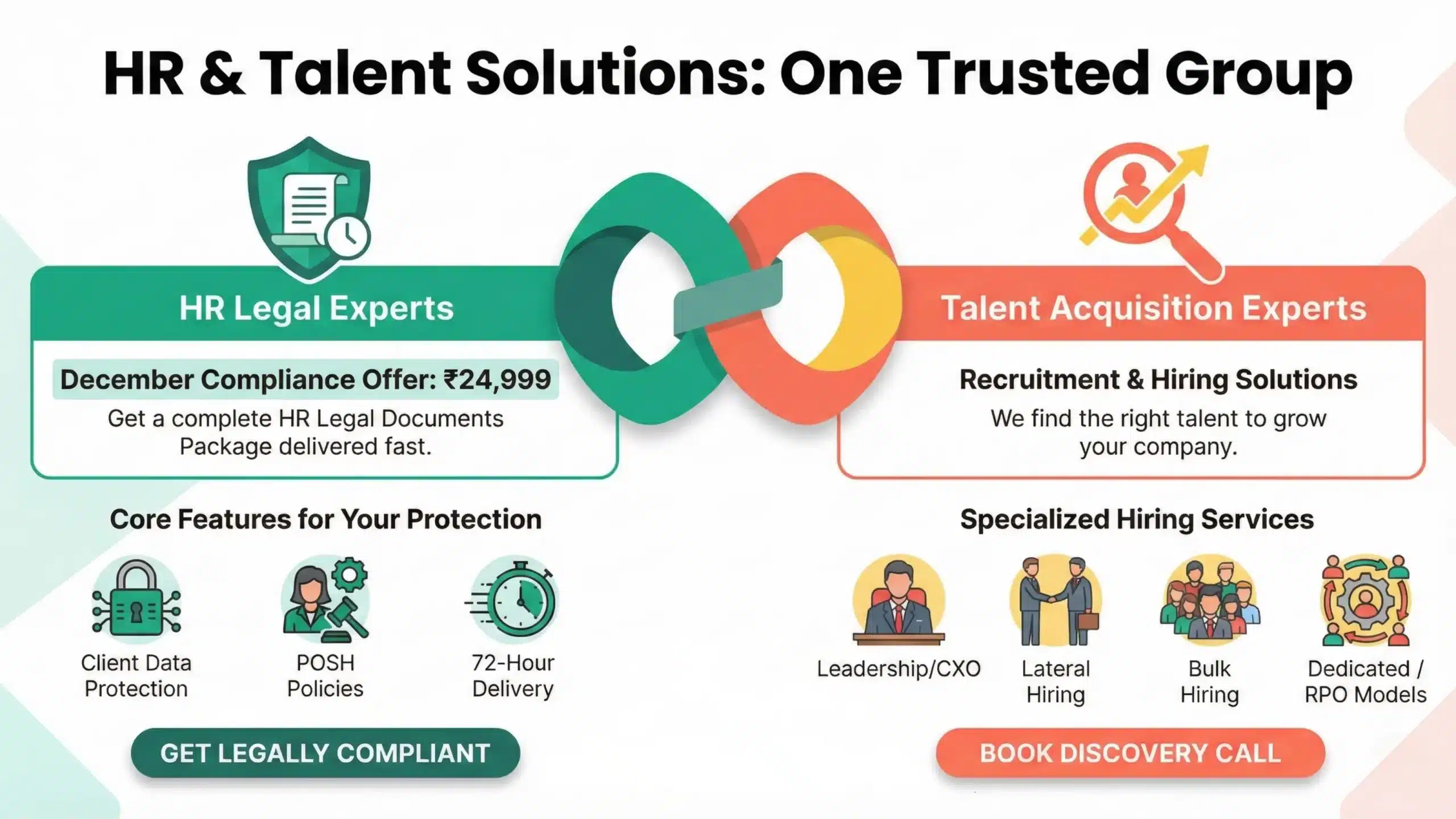In organizational development, HR intervention is one key element that catalyzes growth and success. Like a skilled coach unlocking the full potential of a sports team, HR intervention revolutionizes how organizations thrive. It is a strategic approach that empowers organizations to unlock their true potential, fuel innovation, and nurture a culture of continuous improvement. Through targeted interventions, HR professionals align goals, break barriers, and create comprehensive strategies that leverage technology and analytics.
Employee Engagement initiatives foster a culture of development where employees are empowered to soar to new heights. This article explores the multifaceted role of HR intervention in driving growth, enhancing performance, and shaping the future of organizational development.
Table of Contents
ToggleWhat is HR Intervention
HR intervention is a strategic process that optimizes human capital within an organization. It involves targeted actions to address specific workforce challenges or opportunities. Talent management, performance improvement, employee engagement, and training systems are all components of an organization’s restructuring system.
Why HR Intervention Matters in Organizational Development
Organizational development is a comprehensive process that aims to improve performance and effectiveness through various strategic interventions. HR intervention stands as a key element within this process, focusing specifically on enhancing the human capital aspects of an organization. It mainly focuses on aligning the workforce with the organization’s goals, values, and mission.
HR Restructuring strategies have the power to transform an organization from within. By targeting critical areas such as talent acquisition, employee engagement, learning and development, and performance management, HR interventions create a positive ripple effect throughout the organization. These strategies optimize employee potential, drive innovation, and foster a culture of continuous improvement, leading to overall organizational growth and success.
The Role of HR Intervention in Driving Growth and Success
Catalyzing Change: HR strategy implementation acts as an organizational change catalyst. By identifying areas for improvement, such as outdated processes, ineffective communication channels, or underutilized talent, HR interventions pave the way for positive transformation. They enable organizations to adapt to market dynamics, seize new opportunities, and drive growth by strategically aligning human resources with business objectives.
Unleashing Potential: Effective Workforce transformation unleashes employees’ full potential, creating an environment that fosters high performance and innovation. By implementing performance management systems, providing targeted training and development opportunities, and promoting a culture of creativity and collaboration, HR interventions empower employees to excel in their roles. This, in turn, drives organizational success and propels innovation forward.
Key Elements for Successful HR Intervention
Aligning Goals for Optimal Results: Linking HR Intervention to Organizational Objectives
To ensure successful HR Restructuring, aligning intervention initiatives with the organization’s objectives is vital. By understanding the company’s mission, vision, and strategic goals, HR professionals can design interventions that directly support and enhance these objectives. This alignment guarantees that HR optimization efforts contribute meaningfully to the organization’s success.
Breaking Barriers and Building Bridges: Communication Strategies for Effective HR Intervention
Clear and effective communication is a cornerstone of successful Workforce transformation. By fostering open communication channels between HR professionals, employees, and stakeholders, organizations can overcome barriers and create an environment of transparency and trust. Effective communication strategies ensure that the goals and benefits of HR strategies are clearly understood, leading to greater acceptance and engagement from all parties involved.
Creating a Comprehensive HR Intervention Strategy: Balancing Short-term and Long-term Goals
It encompasses both short-term and long-term goals. While short-term goals may focus on immediate challenges, long-term goals concentrate on sustainable growth and continuous improvement. By balancing these two perspectives, organizations can implement interventions that yield immediate results while laying the foundation for long-term success.
Utilizing Technology and Analytics: Leveraging Data for Smarter HR Interventions
Technology and data analytics have become invaluable tools in HR strategy implementation. Leveraging advanced HR technologies and data-driven insights allows organizations to make informed decisions and implement interventions tailored to specific needs. By utilizing analytics to identify trends, anticipate future challenges, and measure the impact of interventions, HR professionals can drive smarter, more effective interventions.
Nurturing a Culture of Development: Fostering Continuous Learning and Growth
A continuous learning and development culture is key to successful talent optimization. By providing opportunities for training, upskilling, and career advancement, organizations empower employees to grow and evolve continually. This culture ensures employees have the necessary skills and knowledge to drive organizational development and achieve business objectives.
Best Practices in HR Intervention for Enhanced Organizational Development
Assessing Needs and Identifying Opportunities
To create impactful HR interventions, organizations must first assess their needs and identify opportunities for improvement. This involves conducting thorough analyses of the current workforce, identifying gaps in skills and competencies, and understanding employee satisfaction and engagement levels. HR professionals can develop targeted strategies to address specific needs by pinpointing areas that require intervention.
Collaboration for Success
Successful HR intervention requires engaging and collaborating with various stakeholders, including employees, managers, executives, and HR professionals. By involving stakeholders in the intervention process from the outset, organizations ensure that interventions are aligned with their expectations and needs. Collaboration fosters ownership, buy-in, and a shared commitment to achieving organizational development goals.
Managing Change with Adroitness
Change management plays a critical role in the successful implementation of HR interventions. Organizations must anticipate and manage the resistance often accompanying change, ensuring that interventions are introduced with minimal disruption. Effective change management involves clear communication, addressing concerns, providing support, and empowering employees throughout the intervention process.
Measuring Effectiveness
Organizations need to establish metrics and evaluation frameworks to gauge the effectiveness of HR interventions. Measuring key performance indicators, such as employee satisfaction, retention rates, productivity levels, and overall organizational performance, allows organizations to objectively assess the impact of interventions. By analyzing data and feedback, HR professionals can make data-driven decisions and fine-tune interventions for optimal results.
Showcasing Success Stories
Sharing success stories done right can inspire and motivate organizations to embark on their own organizational development journey. By showcasing real-life examples of how HR innovation and optimization have transformed organizations, improved employee engagement, and driven growth, organizations can learn from best practices and adapt them to their unique contexts.
Benefits of Strategic HR Intervention in Organizational Development
Empowering the Workforce
Strategic HR interventions profoundly impact employee satisfaction, engagement, and retention. Organizations can boost morale and create a motivated and committed workforce by creating a positive work environment, providing opportunities for growth and development, and recognizing and rewarding employees’ contributions. As a result, productivity, performance, and retention increase.
Enhancing Agility and Adaptability
In today’s rapidly changing business landscape, organizational agility and adaptability are crucial for success. HR interventions that promote flexibility, innovation, and a growth mindset enable organizations to respond swiftly to market shifts, industry disruptions, and evolving customer demands. By fostering a culture of adaptability, this system enhances an organization’s resilience and ability to thrive in uncertain times.
Building a Diverse and Inclusive Culture
HR interventions are vital in building a diverse and inclusive organizational culture. To foster a sense of belonging and an environment where employees of all backgrounds can thrive, organizations must implement strategies that promote diversity, equity, and inclusion. A diverse and inclusive culture drives creativity, collaboration, and innovation, leading to better problem-solving and decision-making.
Addressing Challenges Head-On
Organizational challenges, such as low morale, communication breakdowns, or ineffective leadership, can impede growth and hinder success. HR interventions provide a structured approach to addressing these challenges head-on. By identifying root causes, implementing targeted interventions, and monitoring progress, organizations can effectively resolve issues, promote positive change, and create a more harmonious and productive work environment.
How to Implement HR Intervention in Your Organization
Implementing HR intervention in your organization can be done in two ways: independently following our five easy steps or seeking assistance from a reputable recruitment consultancy. For instance, you have a dedicated HR team or the necessary expertise. In that case, you can implement HR interventions internally by assessing organizational needs, developing a comprehensive plan, engaging stakeholders, executing interventions, and monitoring progress.
By using these Five easy steps:
- Assess Organizational Needs: Identify areas that require intervention by thoroughly analyzing challenges and performance gaps.
- Develop an Intervention Plan: Create a clear and comprehensive plan outlining the specific interventions to be implemented, considering resources and timelines.
- Engage Stakeholders: Gain support from key stakeholders by communicating the interventions’ purpose, benefits, and expected outcomes.
- Execute Interventions: Implement the interventions according to the plan, providing necessary training and support to employees involved.
- Monitor and Adjust: Continuously monitor the effectiveness of interventions, collect data, and make adjustments as needed to ensure desired results are achieved.
On the other hand, collaborating with a recruitment consultancy like ours brings added benefits of industry expertise, access to resources, and a network of professionals experienced in driving organizational development through HR interventions.
As for us, Corporate Stalwarts specialize in driving growth for clients and candidates. With industry expertise and a vast network, we offer tailored HR intervention solutions for organizational development, optimizing human capital, and fostering success. Our dedicated team ensures effective implementation and measurable results. We’re committed to supporting your growth and helping individuals thrive.
The Future of HR Intervention: Shaping Organizational Development
The Role of AI and Automation in HR Intervention
The future of HR intervention lies in embracing technological advancements, such as artificial intelligence (AI) and automation. AI-powered tools can streamline HR processes, enhance data analytics capabilities, and provide personalized employee experiences. Automation frees HR professionals’ time, allowing them to focus on strategic initiatives and higher-value activities that drive organizational development.
HR Intervention Strategies for the Modern Workplace
The digital era brings new challenges and opportunities for HR intervention. This strategy must adapt as organizations adopt remote work, digital collaboration tools, and flexible work arrangements. Virtual onboarding, remote employee engagement initiatives, and leveraging data analytics for remote workforce management will drive organizational development in the modern workplace.
Adapting HR Intervention to Evolving Organizational Needs
As organizational needs evolve, HR interventions must adapt to meet new challenges. HR professionals must stay updated on emerging trends, regulatory changes, and industry shifts to develop interventions that address evolving needs. By continuously assessing the effectiveness of interventions, conducting regular needs assessments, and embracing agility, organizations can overcome future challenges and continue their path toward successful organizational development.
Takeaway
HR intervention stands as a key element in achieving successful organizational development. By understanding its importance, harnessing its transformative power, and implementing the key elements and best practices, organizations can unlock the full potential of their workforce. Strategic HR transformation drives growth and success, creates a positive work culture, empowers employees, and positions organizations for a prosperous future in the ever-changing business landscape.

Corporate Stalwarts is a trusted recruitment firm with 20+ years of expertise in executive search and leadership hiring.
We’ve placed 10,000+ candidates across 600+ companies in FMCG, Manufacturing, IT, Pharma, and more. Our 1M+ candidate pool and 48-hour turnaround enable fast, high-quality hiring solutions.
We help businesses build high-performance teams with precision, speed, and industry expertise.











